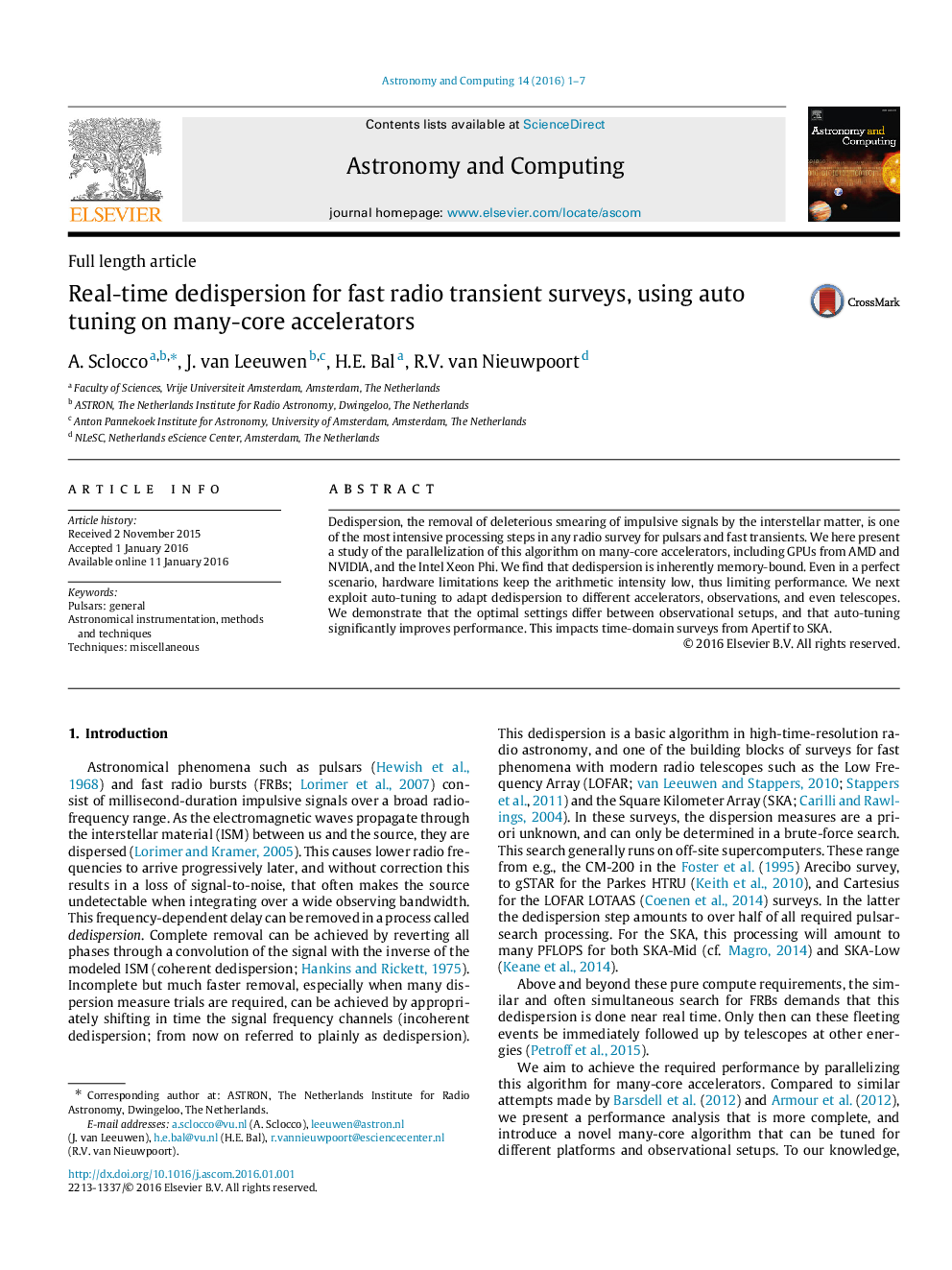| Article ID | Journal | Published Year | Pages | File Type |
|---|---|---|---|---|
| 497515 | Astronomy and Computing | 2016 | 7 Pages |
Dedispersion, the removal of deleterious smearing of impulsive signals by the interstellar matter, is one of the most intensive processing steps in any radio survey for pulsars and fast transients. We here present a study of the parallelization of this algorithm on many-core accelerators, including GPUs from AMD and NVIDIA, and the Intel Xeon Phi. We find that dedispersion is inherently memory-bound. Even in a perfect scenario, hardware limitations keep the arithmetic intensity low, thus limiting performance. We next exploit auto-tuning to adapt dedispersion to different accelerators, observations, and even telescopes. We demonstrate that the optimal settings differ between observational setups, and that auto-tuning significantly improves performance. This impacts time-domain surveys from Apertif to SKA.
